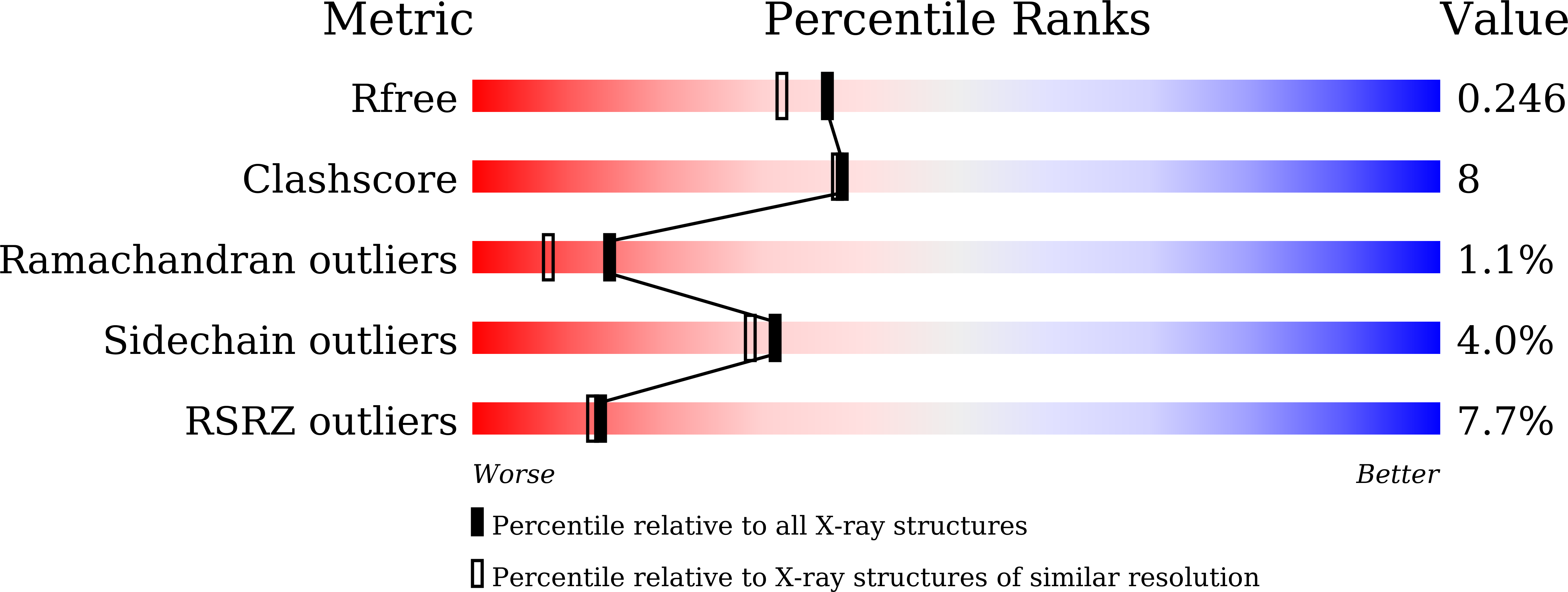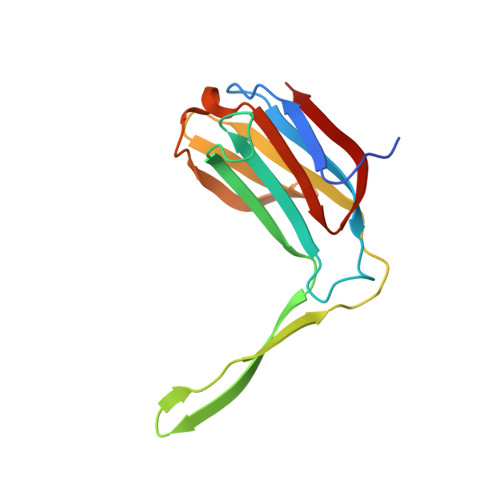Structure-function studies of galectin-14, an important effector molecule in embryology.
Si, Y., Li, Y., Yang, T., Li, X., Ayala, G.J., Mayo, K.H., Tai, G., Su, J., Zhou, Y.(2021) FEBS J 288: 1041-1055
- PubMed: 32525264
- DOI: https://doi.org/10.1111/febs.15441
- Primary Citation of Related Structures:
6K2Y, 6K2Z - PubMed Abstract:
The expression of prototype galectin-14 (Gal-14) in human placenta is higher than any other galectin, suggesting that it may play a role in fetal development and regulation of immune tolerance during pregnancy. Here, we solved the crystal structure of dimeric Gal-14 and found that its global fold is significantly different from that of other galectins with two β-strands (S5 and S6) extending from one monomer and contributing to the carbohydrate-binding domain of the other. The hemagglutination assay showed that this lectin could induce agglutination of chicken erythrocytes, even though lactose could not inhibit Gal-14-induced agglutination activity. Calorimetry indicates that lactose does not interact with this lectin. Compared to galectin-1, galectin-3, and galectin-8, Gal-14 has two key amino acids (a histidine and an arginine) in the normally conserved, canonical sugar-binding site, which are substituted by glutamine (Gln53) and histidine (His57), thus likely explaining why lactose binding to this lectin is very weak. Lactose was observed in the ligand-binding site of one Gal-14 structure, most likely because ligand binding is weak and crystals were allowed to grow over a long period of time in the presence of lactose. We also found that EGFP-tagged Gal-14 is primarily localized within the nucleus of different cell types. In addition, Gal-14 colocalized with c-Rel (a member of NF-κB family) in HeLa cells. These findings indicate that Gal-14 might regulate signal transduction pathways through NF-κB hubs. Overall, the present study provides impetus for further research into the function of Gal-14 in embryology.
Organizational Affiliation:
Engineering Research Center of Glycoconjugates Ministry of Education, Jilin Provincial Key Laboratory of Chemistry and Biology of Changbai Mountain Natural Drugs, School of Life Sciences, Northeast Normal University, Changchun, China.


















